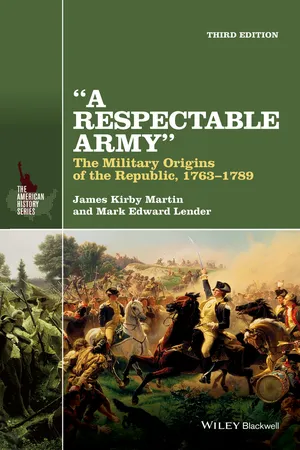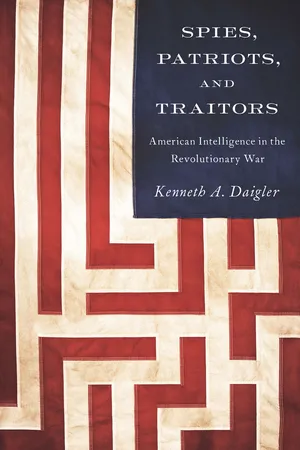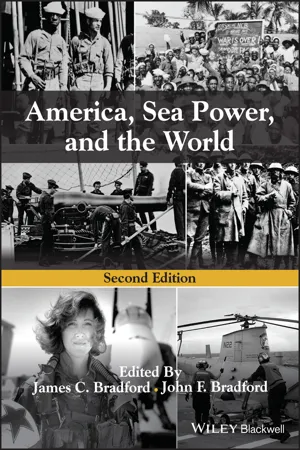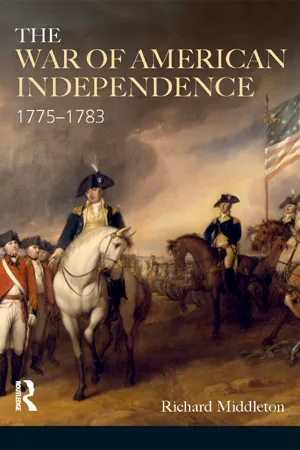History
Battle of Yorktown
The Battle of Yorktown, fought in 1781 during the American Revolutionary War, was a decisive victory for the American and French forces over the British. General George Washington and French General Comte de Rochambeau led the siege, which ultimately led to the surrender of British General Cornwallis and his troops. This significant battle effectively ended major combat operations in North America.
Written by Perlego with AI-assistance
Related key terms
4 Key excerpts on "Battle of Yorktown"
- eBook - ePub
A Respectable Army
The Military Origins of the Republic, 1763-1789
- James Kirby Martin, Mark Edward Lender(Authors)
- 2015(Publication Date)
- Wiley-Blackwell(Publisher)
As the defeated British columns began to parade that autumn afternoon, their musicians supposedly struck up a familiar melody, “The World Turned Upside Down.” No tune could have been more fitting. The mighty and proud had fallen. A small band of hardened American regulars, dreaming of a better life, had, with invaluable French assistance, endured the many dark days of despair following those of sunshine enthusiasm—and now beheld the prospect of complete triumph. Success at Yorktown would bring the cause of establishing a republican order in North America one more vital step closer to legitimacy in the minds of the indifferent and uncommitted. On the other side that day, the British had nothing to cheer. They had long since fumbled away the initiative in America—and also seemed to be losing it elsewhere across the globe. Whether the people of Britain would allow the war to continue, once they learned about Yorktown, had become the main question.The scene on the afternoon of October 19 was emotional, certainly because of everything it signified. The British war effort had suffered another devastating blow—the loss of an army numbering 7,200 or more. Washington, communicating with Congress, praised “the unremitting Ardor which actuated every Officer and Soldier in the combined Army” that “principally led to this Important Event.” Elsewhere on the field, a distraught British corporal spoke of his musket as he threw it on a pile of surrendered weapons: “May you never get so good a master again!”Formulating a Peace Settlement
Contrary to popular lore, the Yorktown triumph was not solely responsible for the first rush in British peace overtures. The situation was more complex. A look at the war map helps explain why the parent nation “had lost its nerve,” as Piers Mackesy has written. “It was the timing of the blow which mattered” in making Yorktown so significant.3 - eBook - ePub
Spies, Patriots, and Traitors
American Intelligence in the Revolutionary War
- Kenneth A. Daigler(Author)
- 2014(Publication Date)
- Georgetown University Press(Publisher)
CHAPTER 11
YORKTOWN AND THE ENDGAME
A fter the British losses sustained at the Battle of Cowpens and the Battle of Guilford Courthouse in the early months of 1781, Cornwallis no longer had adequate forces to hold the Carolinas against Greene’s Southern Army. He moved his forces into Virginia in late April to link up with other British forces there. Soon after his arrival, he received a request from his commander, General Clinton in New York City, to send three thousand of his troops back to the city to bolster its defenses. This request, and subsequent decisions that created confusion between the two officers, were in response to Washington’s most important and comprehensive strategic deception operation of the war: convincing General Clinton that American and French forces intended to attack New York City. This, in turn, made Clinton uncertain as to the degree he could reinforce and support Cornwallis’s forces in Virginia.This confusion enabled the Continental Army, with strong French support, to defeat the British at Yorktown. The Battle of Yorktown, acknowledged as the victory that forced the British to end the conflict, was a battle where intelligence information, both strategic out of New York City and tactical from within Yorktown’s defenses, combined with Washington’s strategic deception activities, were key elements in the military result.In mid-December 1780, Benedict Arnold—by then a brigadier general in the British Army and eager to punish his former countrymen—was sent to Portsmouth, Virginia, on the Elizabeth River across from Norfolk. His mission was to wreak havoc on the local militia forces, with the hope of drawing some American forces away from Cornwallis’s troops farther south. There was also some slight British hope that he could create an area under British control where Virginia loyalists could rally to the king’s cause.1 - eBook - ePub
- James C. Bradford, John F. Bradford, John F. Bradford, James C. Bradford(Authors)
- 2022(Publication Date)
- Wiley-Blackwell(Publisher)
French morale was high and de Grasse's men were well disciplined. Plus, de Grasse understood the strategic setting: he did not need to destroy the enemy, just prevent him from entering the Chesapeake and lifting the siege of Yorktown. During the ensuing four‐hour battle both fleets suffered significant damage, but neither gained the upper hand. Graves, hampered by Admiralty Fighting Instructions that curtailed his options, was cautious and did not seize the tactical initiative, hampered by Fighting Instructions that curtailed his options. At the same time, de Grasse was happy to maintain his position at the mouth of the Bay and keep Graves' fleet at arm's length. The two fleets watched one another warily for another two days.Yorktown campaign, 1781.Map 2.4The noose was now tightening inexorably around Cornwallis. Washington's and Rochambeau's forces arrived, as well as Comte de Barras bringing siege artillery and adding his six ships‐of‐the‐line to de Grasse's 28. Recognizing that a naval victory was now impossible, Graves returned to New York, and Cornwallis was doomed. Surrounded by the Franco‐American Army on land and de Grasse's fleet at sea, Cornwallis knew he had no option but to surrender. The Battle of the Virginia Capes (also known as the Battle of the Chesapeake) was the decisive event of the war in North America. During the next two years, Great Britain sent additional ships and troops to the Caribbean but did not reinforce its army in New York. The writing now appeared to be on the wall.The End of the War
In general, the persistent and victorious actions of the French Navy helped to bring about the war's end. After the French seizure of the British colony of St. Kitts and several other islands in the West Indies, the British were forced to send naval forces there, thereby weakening their presence in American waters. At the same time, the Franco‐Spanish Siege of Gibraltar continued in Europe, also diverting British naval assets. These events, coupled with Cornwallis' 1781 defeat at Yorktown, put overwhelming pressure on the British government. In April 1782, the British House of Commons voted to end the war in America and the various parties began to negotiate a peace settlement. - eBook - ePub
The War of American Independence
1775-1783
- Richard Middleton(Author)
- 2014(Publication Date)
- Routledge(Publisher)
Credit must also be given to de Grasse for choosing the Chesapeake as his objective. Had he gone to New York, as Washington wanted, the allies would have had to deal with an army almost twice as large as that of Cornwallis, protected by defenses that had been progressively strengthened over five years. The makeshift naval base at Yorktown offered a much more vulnerable target. As it was, de Grasse was able to keep the trap closed on Cornwallis’s army, while providing additional men, cannon, and ammunition for the besieging army. Here French expertise in siege warfare was of inestimable value.Finally, of course there was the contribution of Washington. Yorktown was a reward for all his years of endeavor. He had patiently waited for such a moment, recognizing that a premature move on his part could destroy the Revolutionary cause. Generalship, however, is not solely or even mainly about heroic actions or sudden inspired decisions. The instruments of war first had to be fashioned in the shape of officers, men, and supply services. This required him to act not only as a soldier but as a statesman, politician, and diplomat too as he endeavored to work with the French while coordinating the efforts of Congress and the states. It had been a truly remarkable achievement.125For the British, Yorktown was an unimaginable disaster. As one officer commented at the end of the siege: “Who would have thought a hundred years ago that out of this multitude of rabble would arise a people who could defy kings.”126 But although the British had been fairly beaten by a superior force, this did not prevent recriminations for what had happened. Initially Clinton blamed the ministry for not sending enough ships and troops. He told Germain on 29 October how everyone had been surprised at de Grasse’s arrival with 28 ships of the line compared to Hood’s 14. “To this inferiority then I may with confidence assert, and to that alone, is our present misfortunate to be imputed.”127 But after receiving Cornwallis’s formal report, Clinton began to feel that he too should bear some responsibility for misconstruing his directions regarding a base at Yorktown. He also criticized Cornwallis subsequently for advancing into Virginia without having first subdued the Carolinas.128
Learn about this page
Index pages curate the most relevant extracts from our library of academic textbooks. They’ve been created using an in-house natural language model (NLM), each adding context and meaning to key research topics.



